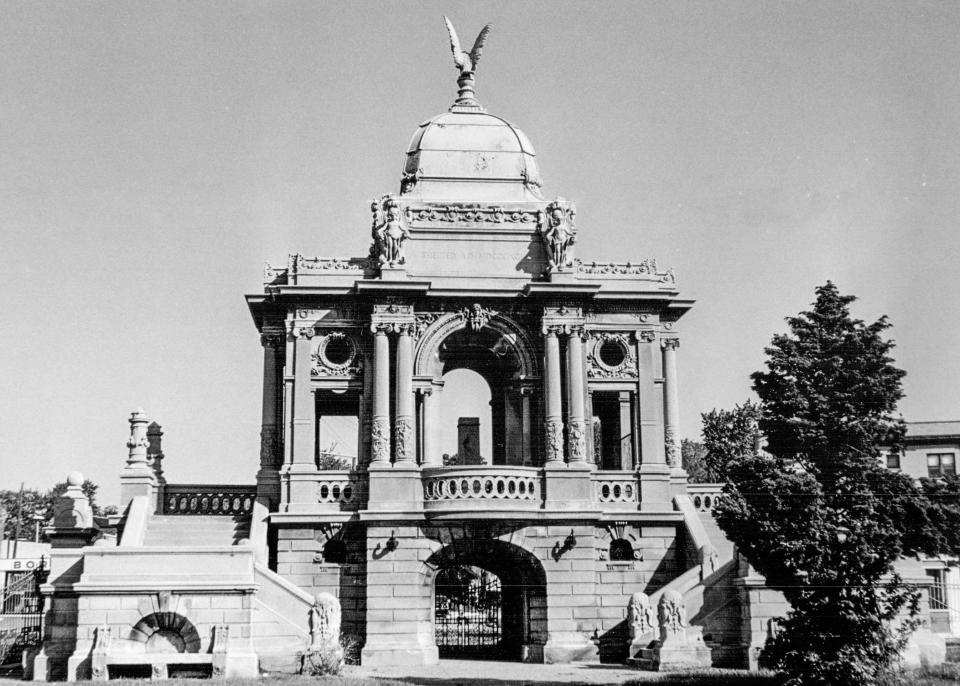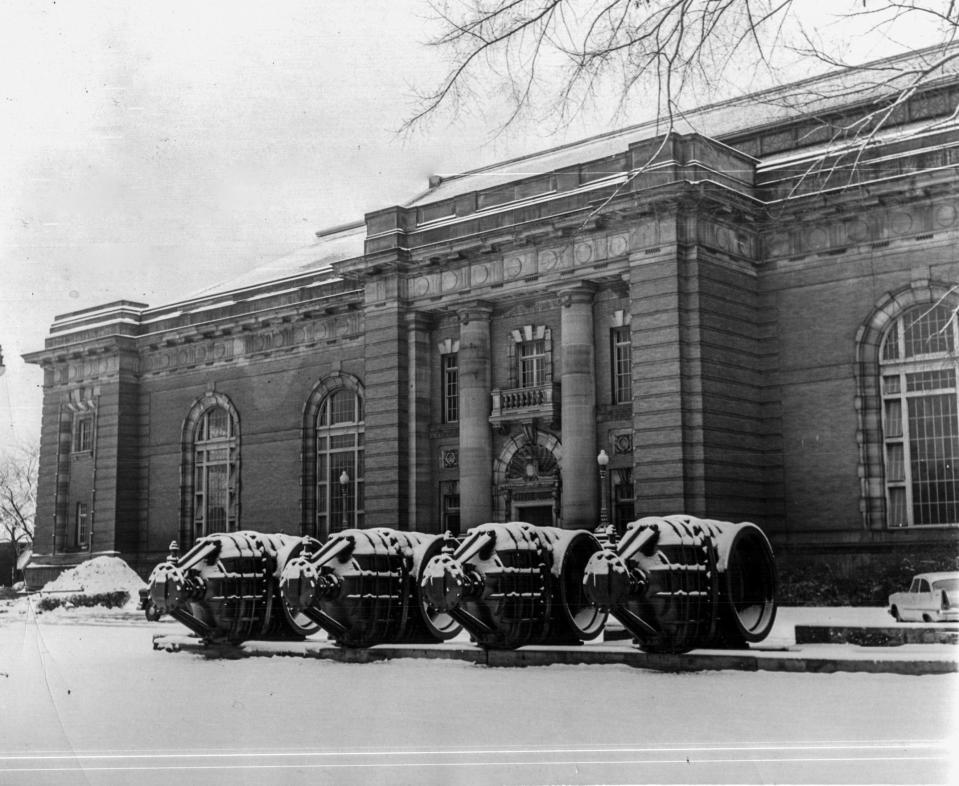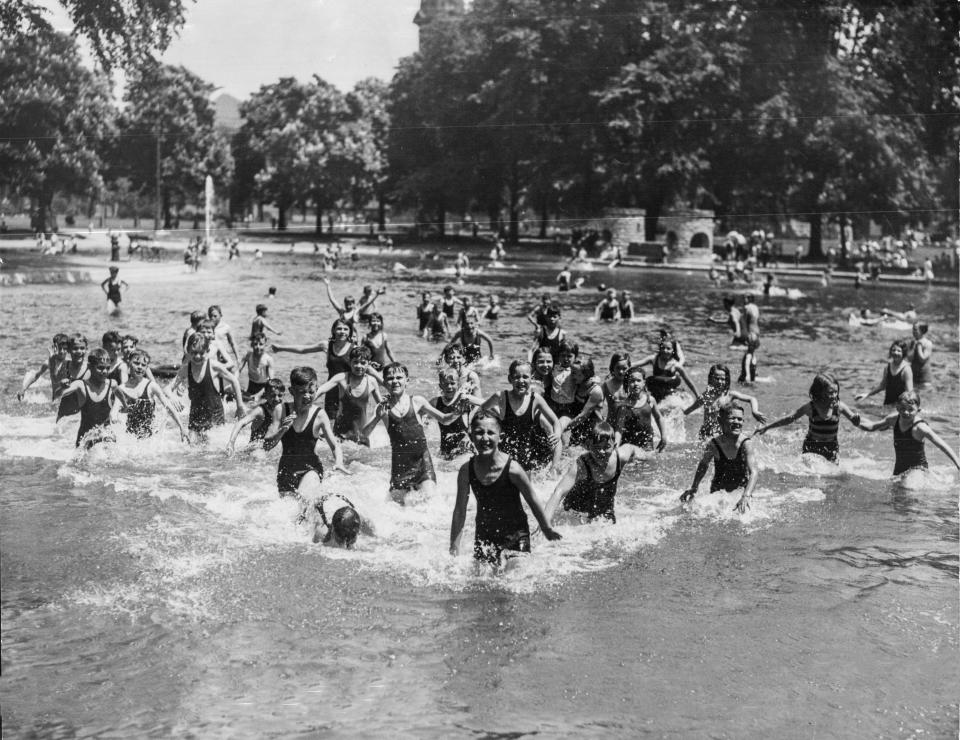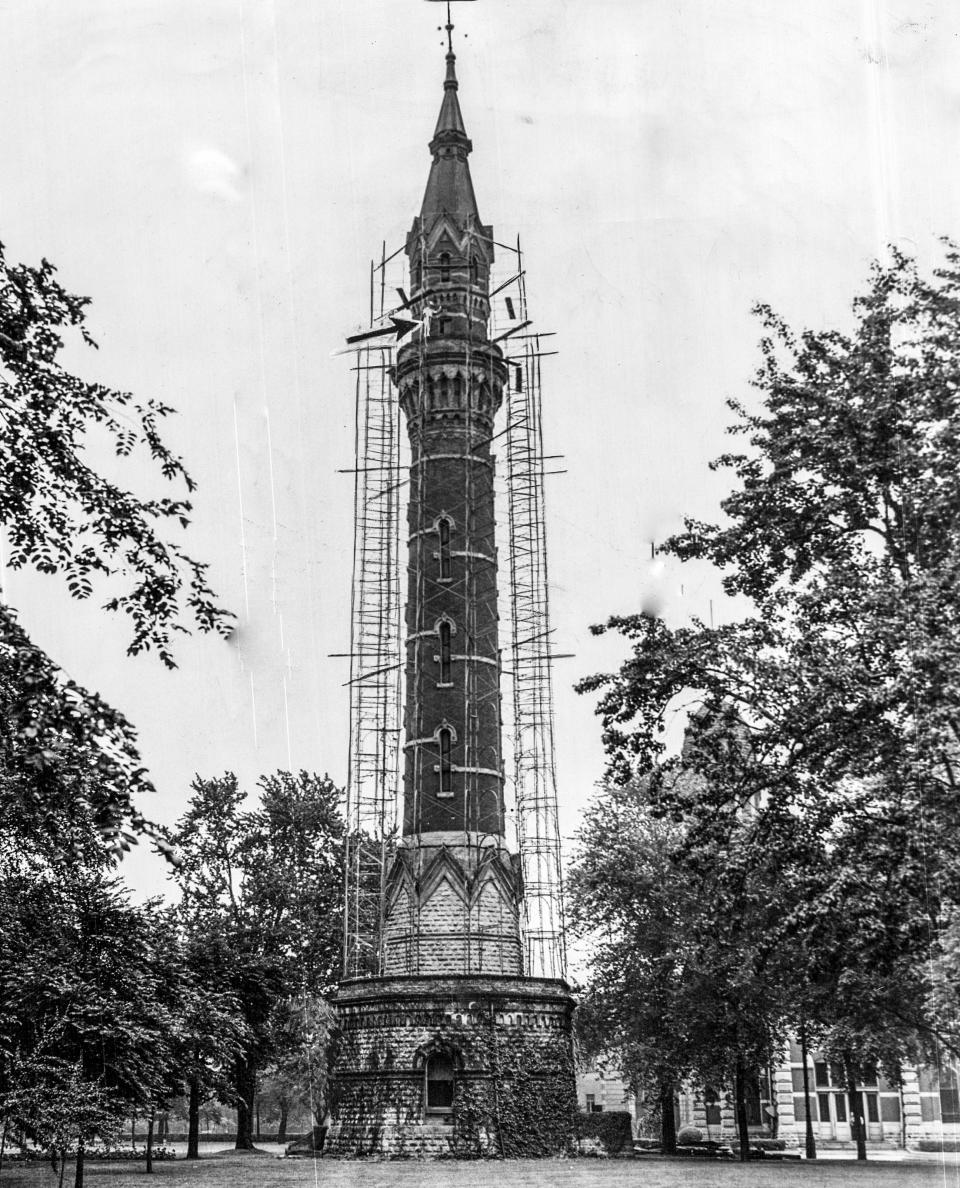Free Press Flashback: For decades Detroit ghost park was 'Disneyland' to kids
Walk out of Pewabic Pottery on East Jefferson and you can’t miss it: the massive Beaux Arts Chauncey Hurlbut Gate. While striking, it looks like a portal to nowhere.
Behind the gate are acres of vacant land and a couple of large buildings. The entire area is off limits to the public.
The bleak scene has remained the same since the 1950s. But during an earlier era, the large piece of land beyond the gate was known as Waterworks Park, a corner of the city that served the dual purpose of water treatment facility and urban recreational spot.

The idea of a public utility and a public park sharing the same ground is a testimony to the ingenuity of the city’s 19th-century leaders. But in our security conscious 21st century, the idea reflects a bygone era.
The land was the site of a mammoth pumping station erected in 1877, the brainchild of Hurlbut, who served on the Detroit Board of Water Commissioners from 1868 to 1885.
City leaders devoted the space flanking the new plant to the recreational need of Detroiters. Waterworks Park eventually grew to 110 acres and included swings and teeter-totters, baseball diamonds, tennis courts, a skating rink, library, conservatory and a lagoon branching in from the Detroit River, for rowing and sailing model boats. The landscaping was lush, and included a grove of 12 pear trees.

‘Our Disneyland’
Upon entering the park, visitors were greeted by a dramatic floral clock. Designed by park superintendent Elbridge Scribner, the structure consisted of over 7,000 plants and flowers bound together by chicken wire, with flowering plants providing the numerals of the dial, which had a diameter of 6 feet. A channel of water was directed behind the clock, which powered several cup-shaped paddle wheels that turned the hands.
In a 1995 Free Press retrospective, reader Marjorie Johnston Kreipke recalled her childhood experiences from the 1920s. “Waterworks Park was our Disneyland,” she wrote.

After his 1885 death, Hurlbut left some $250,000 to the city to continue to improve the park. In gratitude, the board of commissioners honored him by constructing the ornate entry gate, a feature characteristic of the emerging City Beautiful movement. Today, it remains the lone physical reminder of Waterworks Park.
More from Free Press Flashback Meet the women who swam 24 miles across Lake St. Clair in 1927
In “The Buildings of Detroit: A History,” W. Hawkins Ferry describes the structure as having “the appearance of a triumphal arch raised upon a rusticated base and crowned by a slender dome.”
One of the park’s most popular features was a 185-foot standpipe tower built concurrently with the plant. In an era before most of downtown’s skyscrapers, seeing the city from so high was a new experience. Detroiters loved it.

The tower was designed by local architect Joseph Sparks and resembled a minaret. The structure originally served as a vertical water tank that utilized gravity to maintain water pressure throughout the distribution pipes. It was demolished in the mid-1940s.
‘Grief-drawn faces’
In June 1930, the park’s placid ambiance was interrupted by the accidental detonation of dynamite at a construction site in a water intake tunnel that extended into the river from the park’s shore. The blast killed six workers and injured six. The Free Press captured the horror, comparing the scene to a coal-mining disaster:
“Thousands of persons surged into Waterworks Park,” it reported. “Blackened, grimy workmen, with tears streaming down their cheeks, carried unconscious forms of their comrades to the first-aid stations. … Wives and other relatives watched with grief-drawn faces.”
By midcentury, modern-day security concerns arose, which residents challenged. After being closed by military authorities during World War II and the Korean conflict, city leaders, led by Mayor Albert Cobo, sought to close the park indefinitely and enclose it with a newly built security fence — a decision that didn’t sit well with the neighbors.
Angry residents staged demonstrations and made their feelings known before the Common Council in July 1954.
“Charles Dewey, president of the Cadillac Harding Community Club, showed petitions which he said have more than 10,000 signatures asking for the park reopening, a call that unfortunately fell on deaf ears,” the Free Press reported.“Wesley Jefferson rose from the audience and drew cheers when he said, ‘I want to stay within the law, but if we have to, we’ll tear down that fence.’ ”
The vandal smashed the light bulbs
City leaders defended their decision to close the park by raising questionable security concerns, such as the possibility of aging water pipes beneath the park exploding, or children’s kites short-circuiting power lines leading to the pumphouse.
There were some legitimate issues. Public health concerns compelled the filling in of the lagoons. As time went on and the closure became the status quo, community passion for the park gradually subsided. Eventually, the only visible sign of Waterworks Park was the Hurlbut Gate.
More from Free Press Flashback Freep reporter met John Lennon in 1966. Later he was best man at her wedding.
The postwar decades were anything but kind to the structure. Beginning in 1974 with the theft of the statue of Hurlbut, a steady procession of vandals smashed lightbulbs, removed fixtures and painted graffiti. They even stole the wrought iron gates.
In 2007, the gate received much needed TLC from Preservation Detroit. Costing between $600,000 and $800,000, the work was partially financed by a gift from the Hurlbut Trust, the same body that originally paid for its construction. After completion, the gate was sheltered behind a tall decorative fence, preventing further vandalism.But that didn’t stop Mother Nature. During a 2019 storm, lightning struck the gate, destroying the eagle at its pinnacle.
The Great Lakes Water Authority commissioned a replacement, installed in April this year. The authority continues to work on the gate and over the past year has replaced cracked masonry, stolen light fixtures and renewed the surrounding landscaping.
Next up will be an effort to replace the missing statue of Chauncy Hurlbut.
CEO Suzanne Coffey told Dbusiness magazine recently that in addition to providing water and wastewater services, the authority is committed to being a steward of southeast Michigan’s communities.
“This project was one of the ways we can aid in helping preserve Detroit’s iconic history,” she said.
Paul Vachon is a freelance writer who specializes in local history. His most recent book is “Becoming the Motor City: A Timeline of Detroit’s Auto Industry.”
This article originally appeared on Detroit Free Press: Waterworks Park on Jefferson was 'Disneyland' to Detroit kids

